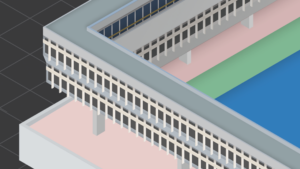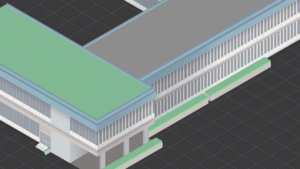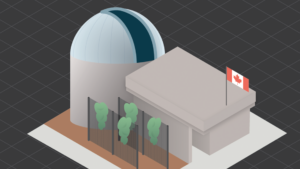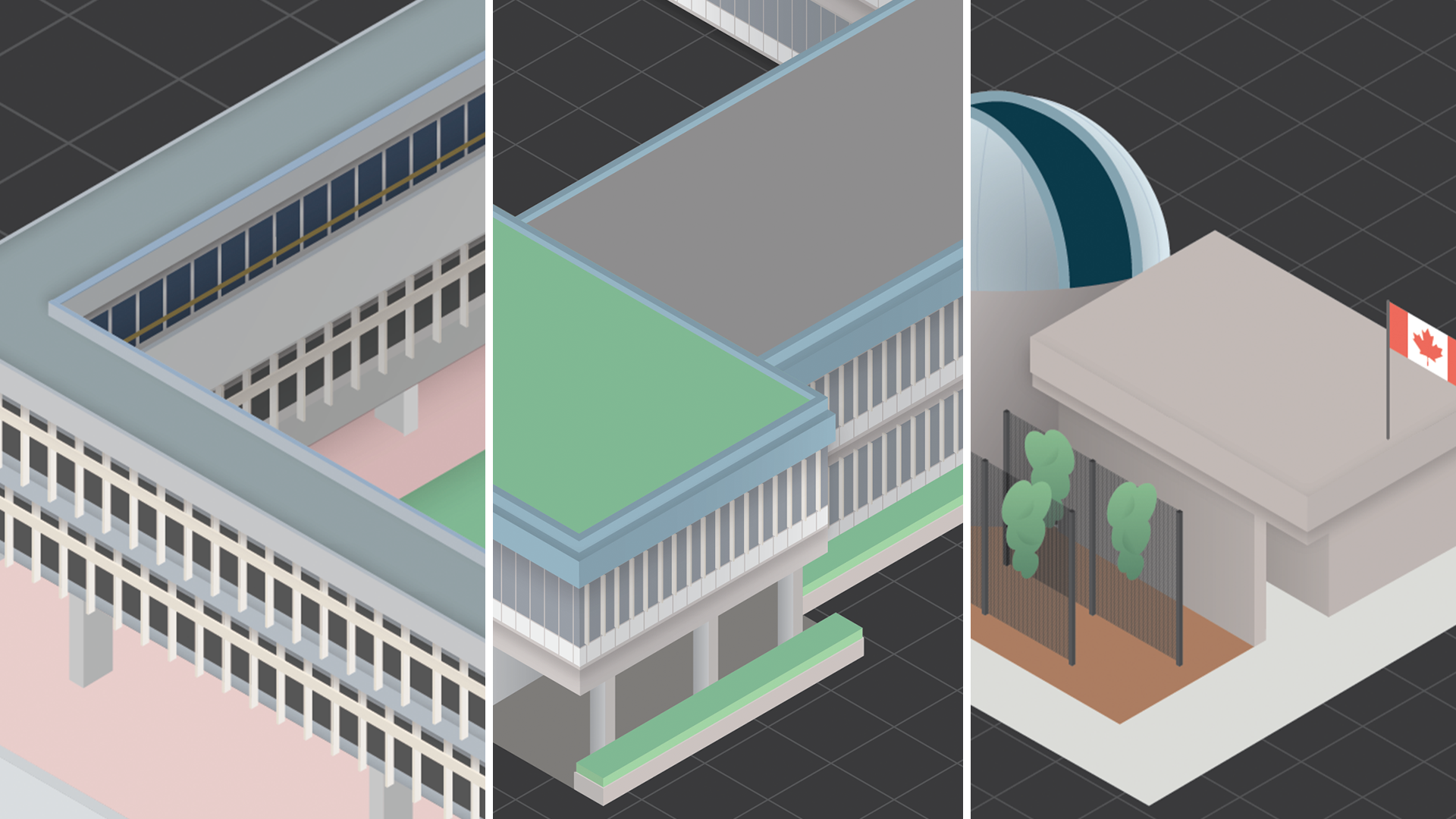by Marco Ovies, Features Editor
So you’ve been on campus for a couple of weeks now and you’ve managed to figure out where all of your classes are located. But there is so much more to SFU Burnaby campus than just getting lost trying to find your lecture hall. Let me be your guide as you tour the most famous spots on campus.
Academic Quadrangle (AQ)

If you’re a fellow non-geometry nerd, you’re probably wondering, “What the heck is a quadrangle?” I’m here to tell you it is essentially a square. Why wouldn’t they want to call the Academic Quadrangle the Academic Square? Besides “square” not having the same academic feel to it, I have a feeling it was because SFU is smart enough to know us “mature” university students would instantly use the acronym AS to call it The Ass (that’s where my mind went anyway). This is also the reason they changed the university name from Fraser University to Simon Fraser University because “FU” did not look great on varsity jackets.
On a more serious note, the most notable spot in the AQ has to be the reflecting pond on the fourth floor (I know it doesn’t look like a “floor” but it is still technically the fourth floor, I swear). Inside the pond is a green-looking rock which is actually six tons of lillooet jade that was brought from Hell’s Gate in the Fraser Canyon before the construction of SFU. It is credited as the founding stone of the university.
The reflecting pond where this founding stone is located was one of the special touches SFU architect Arthur Erickson added when designing the campus. He said his design for SFU was inspired by the Acropolis in Athens and the Italian hillsides (I don’t quite see it either, don’t worry).
Also located on the fourth floor of the AQ is the infamous avocado statue which many students have claimed is a perfect hook-up spot (I am not talking from personal experience here, I promise). While the avocado-like shape may remind students to eat healthily, it is actually not meant to be an avocado at all. Artist Carlos Basanta called this piece of art Oval Reflections and in a 2014 interview with The Peak, confirmed it is neither an egg nor an avocado, but rather an “egg-avocado.” In reference to his art, Basanta said, “the egg is the most perfect and organic shape and is the symbol of beginning, fertility, and wholeness” which is why the sculpture has its oval shape. If you look inside the sculpture, you are able to see your reflection along with some writing inside. Instead of telling you what this writing says, I encourage you to check out the sculpture and take a seat inside to really experience the intent behind this artwork.
Maggie Benston
Who is Maggie Benston you may ask? Well, she is famous for her incredible work in chemistry, computer science, and women’s studies at SFU. According to Vancouver Women’s Caucus, “women only made up 12% of faculty and only 37% of the student body.” Benston also went on to found the Women’s Caucus (now renamed the “Women’s Centre”) alongside other staff, another female faculty member Andrea Lebowitz, and students. The Women’s Caucus dealt with issues regarding jobs, education, and society’s responsibility for children
Additionally, Maggie Benston was also the first “to place the politics of women’s liberation within an anticapitalist framework and to identify domestic labor as the material basis of women’s structural relation to capitalist production and their subordination in society.” To put it in simpler terms, capitalism could not operate without the free reproductive labour of women.
In regards to the actual building itself, its multiple layers are designed to look like a bifurcated staircase (for those of you who don’t have a dictionary handy, it’s basically one of those staircases that start as one big staircase and then split into two tiny staircases going in opposite directions). What most people don’t know is the roof of Maggie Benston has a Xeroflor rain system that helps SFU capture and store rainwater. It is hidden by “14 different species of Sedum Acre succulents, featuring, Dragon’s Blood, Oktoberfest, and Weihenstephaner Gold.”
Saywell Hall

Infamous for being home to what I like to call The Staircase of Death (trademark pending), Saywell Hall is actually named after ex-SFU president William Saywell. He is credited as the longest-running SFU president from 1983–1993. Ten years — that is almost how long it takes some students to finally graduate from SFU. During his time as president “he helped initiate the development of SFU’s downtown Vancouver campus and increased gender equality in SFU’s hiring practices.”
In Saywell Hall, there is plenty of artwork to be seen if you have the chance to look. Notably, there are pieces of Indigenous artwork like Frog Constellation by Jim Hart (Haida) and Written in Earth by Susan Point (Musqueam), located right at the bottom of the stairs in the Atrium Gathering Space.
Of Frog Constellation, Jim Hart said, “The frog is quite powerful in our thinking. It’s one of the creatures that can go in two worlds, in the water and in the upper world, our world . . . The frog is one of my family crests, but I don’t know the family story, how that came to be one of our crests.” It took him close to three and a half years to finish and he refers to the sculpture as his “PhD.”
Trottier Observatory

Has your significant other ever told you they needed space? Well, you are in luck because you can take them to the Trottier Observatory to look at all the space they might need. Trottier Observatory is named after SFU professor Howard Trottier, who actually still teaches at the university, and his brother Lorne Trottier. I would highly recommend everyone to try and take PHYS 190 Introduction to Astronomy with Howard Trottier (it is interesting, I promise). This area on campus is by far one of my favourite places.
The best time to go is at night when the plaza features illuminated seasonal star charts and the long rectangular seating area “glows with coloured bands that reference elemental emission spectra.” For those of you wondering what the elemental emission spectra is, basically each element emits a specific colour of light when you run electricity through it and view it through a prism. This creates a very pretty looking bench during the later hours of the day.
On the ground, metal plates indicate the powers of ten, which is what astronomers use to measure the galaxy. Even the screens placed around the plaza are intentional and represent “a key component in quantum theory in which objects can appear solid yet are spaced apart.” Around the central dome are local plants on pedestals that represent the orbiting of the planets around the sun. Every time I visit the observatory I notice a new detail and there is definitely more to look at, so I really encourage you to visit one day.
Additionally, the dome is the home of a 0.7m telescope with the ability to look at galaxies a billion years old. Best of all, it is open to the public during a weekly event called Starry Nights, held on clear nights every Friday. You don’t need to know anything about astronomy to attend this event and children are encouraged to come. Alongside the giant telescope are groups of volunteers who bring their own telescopes to show people different parts of space. Because of COVID-19, the event is being held digitally for the foreseeable future but keep an eye out for the return of this out-of-this-world event.




